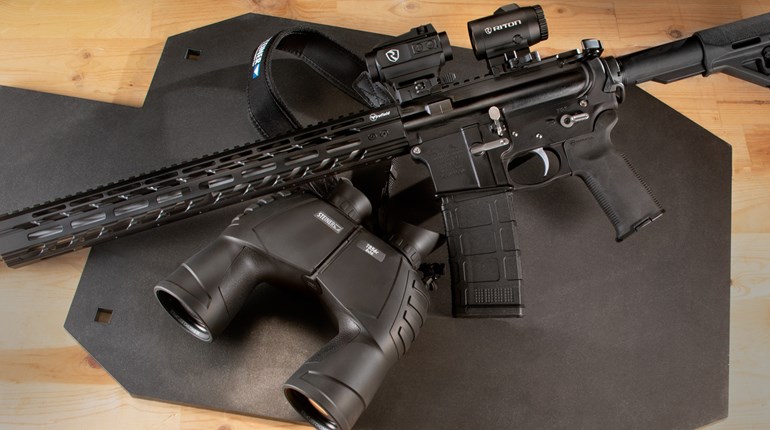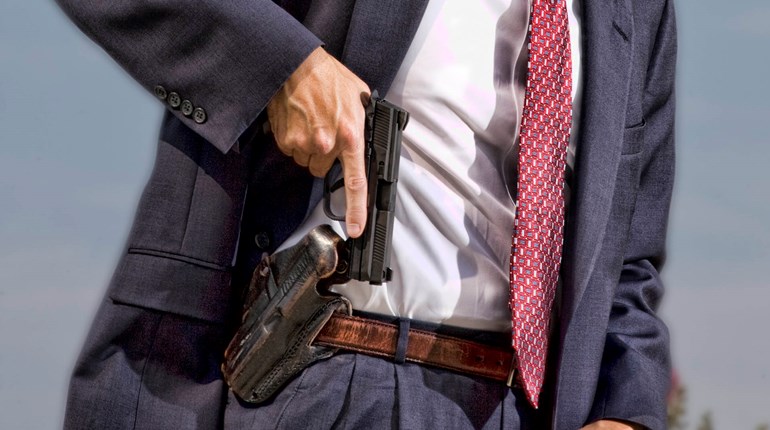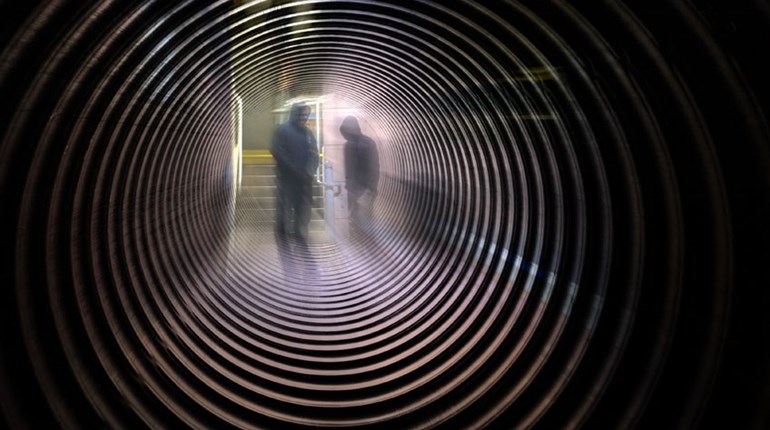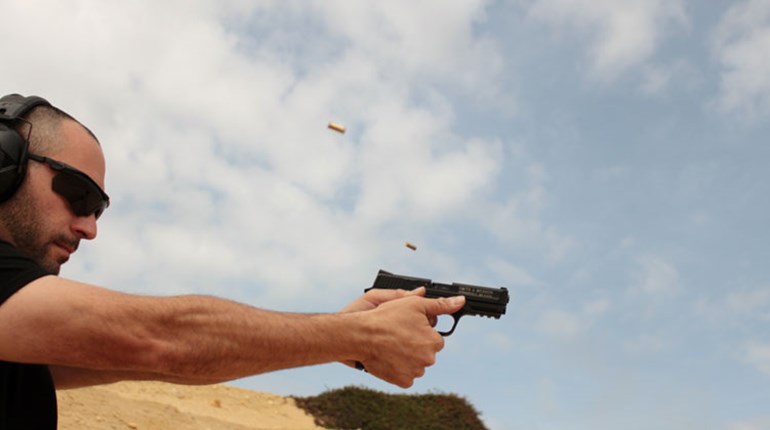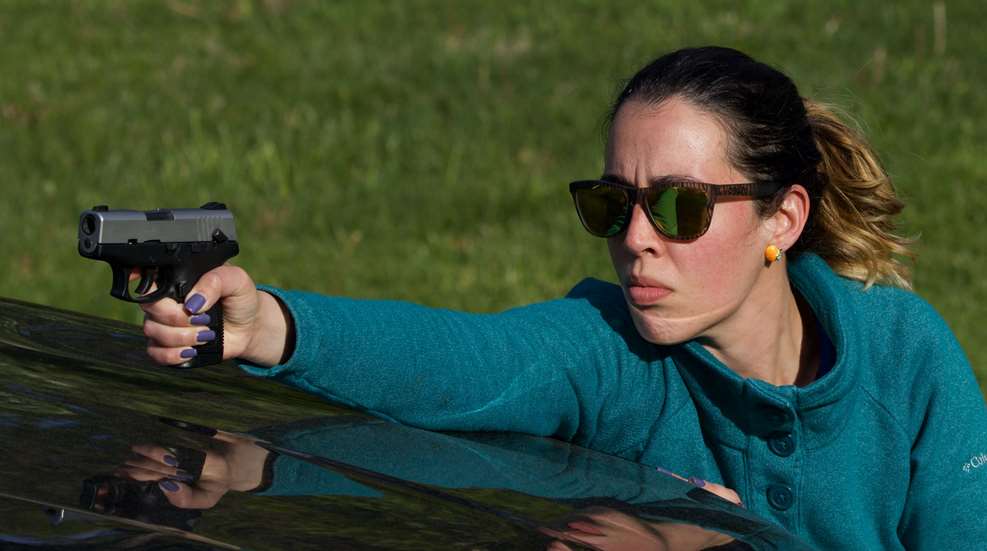
When I signed up for an International Defensive Pistol Association (IDPA) course, I had no idea what I was getting myself in to. Running and shooting at my age? But after just a few minutes in to it, I was hooked! I’ve been practicing drills ever since.
Why might shooting on the move be a useful skill to incorporate into your defensive tactics training? With violent crime increasing, these are dangerous times, so it’s a good idea to learn as many techniques as possible when it comes to protecting yourself.
The Advantage of Moving While Shooting
Shooting on the move is the ability to fire your gun while you are physically moving from point A to point B. While you’re at the range doing target practice, it’s perfectly OK to take a moment and check your grip, stance, sight alignment, etc. But in a real-life defensive situation, you cannot simply stand in one place if someone is actively shooting at you and expect to survive.
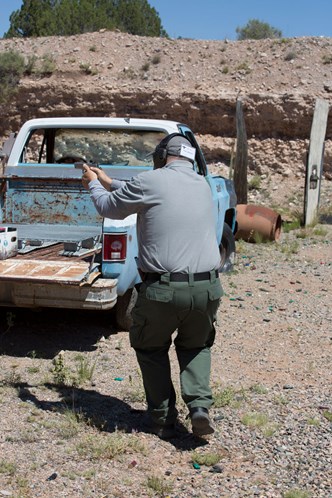
“When you move and shoot, you are both offensive and defensive at the same time,” says Fred Mastison, Force Options USA president and one of the country’s leading experts in the fields of defensive tactics, firearms and executive protection. “You have to be able to execute your offensive action while still being defensive. If your defensive motion is to move, then that gives you a greater advantage over your adversary.” (Image courtesy Fred Mastison)
Lessen the likelihood of getting shot. It’s much more difficult for a criminal to hit a moving target vs. someone just standing in one place.
Moving while shooting also empowers you to interrupt the bad guy’s OODA Loop. Developed by U.S. Air Force Colonel and military strategist John Boyd, the OODA Loop (Observe, Orient, Decide, Act) is a four-step approach to decision making in any situation. For example, in a self-defense situation, the criminal sees where you are, then goes through those steps to take a shot at you based on your location. But if you keep moving, he has to reset all that. Each time you move, you are no longer where he wanted you to be, disrupting his OODA Loop, thereby decreasing his accuracy, and increasing your chances of survival.
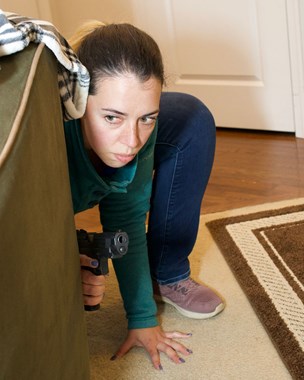
Seek cover. You want to be moving toward cover hopefully, but it’s more than likely that only concealment is available to you. What’s the difference? Cover is something that will actually stop a bullet, like a solid cinder block wall or bulletproof glass. Concealment is something where the shooter cannot see you, such as behind a car or behind an interior house wall.
How to Shoot & Move
Skip the silhouette … for now. Yep, you read right. When practicing at the range, start with a bullseye target, not a silhouette “bad guy” target. Keep using it until your shot pattern is no larger than the size of your closed fist. As your accuracy improves, then it’s OK to move on to a silhouette target. “We have found that when our students practice the shoot and move technique using a silhouette target first, their shot patterns are all over the place,” notes Mastison. “It’s better to practice on a bullseye target first, then move on to a silhouette target.”
Also, keep in mind that in a panicked, real-life defensive situation, your grouping will probably double in size. If your shot pattern is small, you can still hit center mass when it doubles in size during a real defensive situation.
Focus on the front sight. The laws of physics tell us that when you’re shooting and moving your gun, sights are going to be moving much more than if you were standing still. To achieve maximum control and accuracy, focus on the front sight, aiming for center mass. Also, try to smoothly press, not jerk, the trigger.
Relax your hips. To minimize movement and become more stable, Mastison advises to relax your hips. “When we relax our hips, our shoulders tend to drop down a little bit more, our body sinks and we gently bend our knees just a little bit,” he says. “When you move, move like you have a book on your head, and you don’t want it to fall off.”
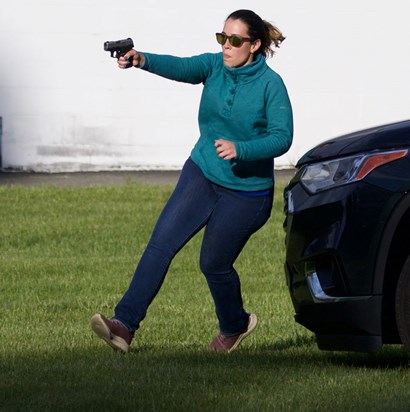
Move quickly. Here’s where practice is key. Granted, there are times when running is called for, and if you can run and get to cover, then shoot, that’s OK. But keep in mind that the faster you run, the less accurate you will be because of all the movement. If you move quickly, at an even pace, almost like gliding, shooting accuracy increases.
Take it one step at a time. First, practice taking one step to the right, then shooting. Then take one step to the left and shoot. And so on, moving backwards and forwards as well. “As your accuracy increases, you can increase the number of steps in each direction before shooting,” advises Mastison.












